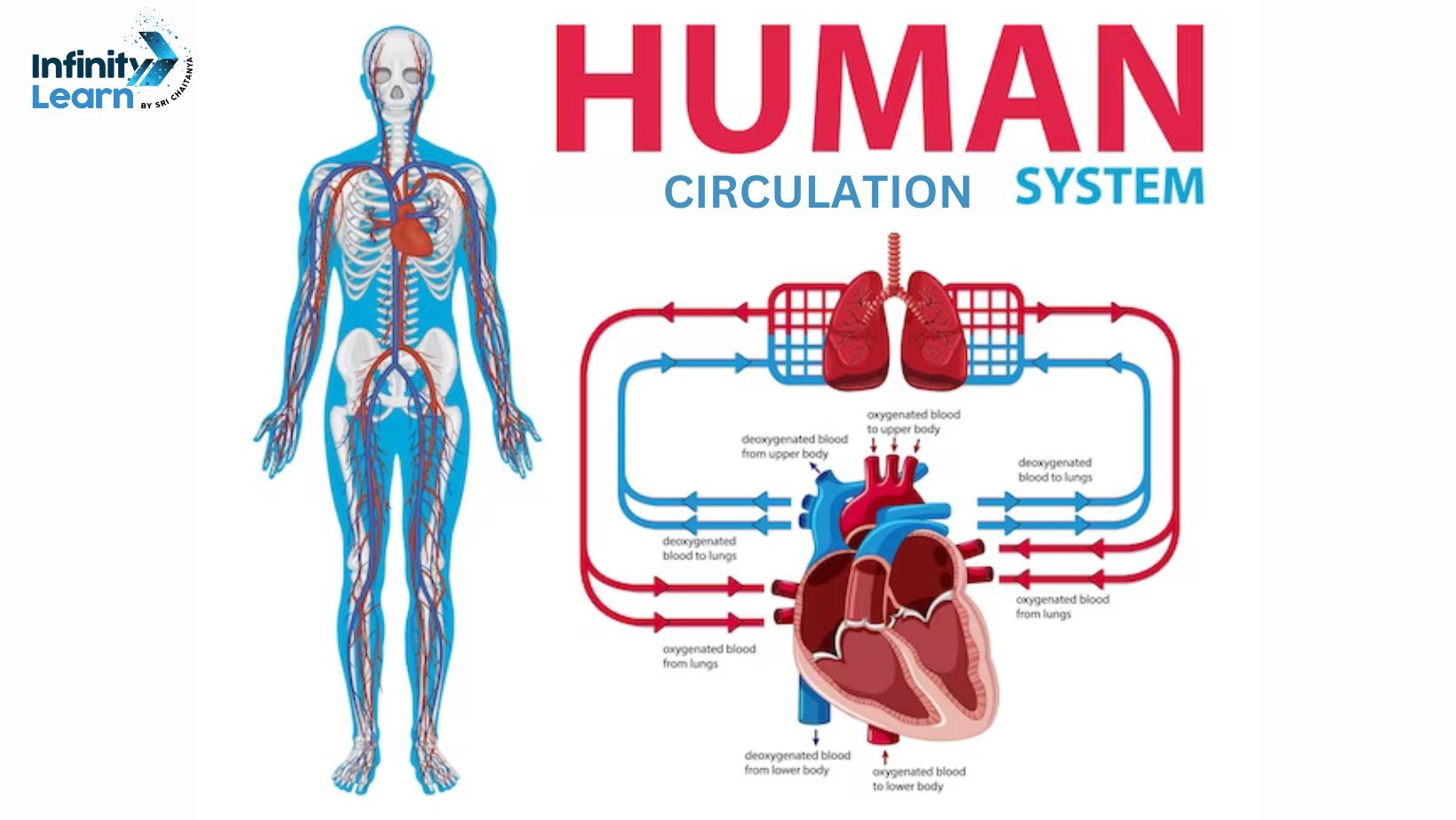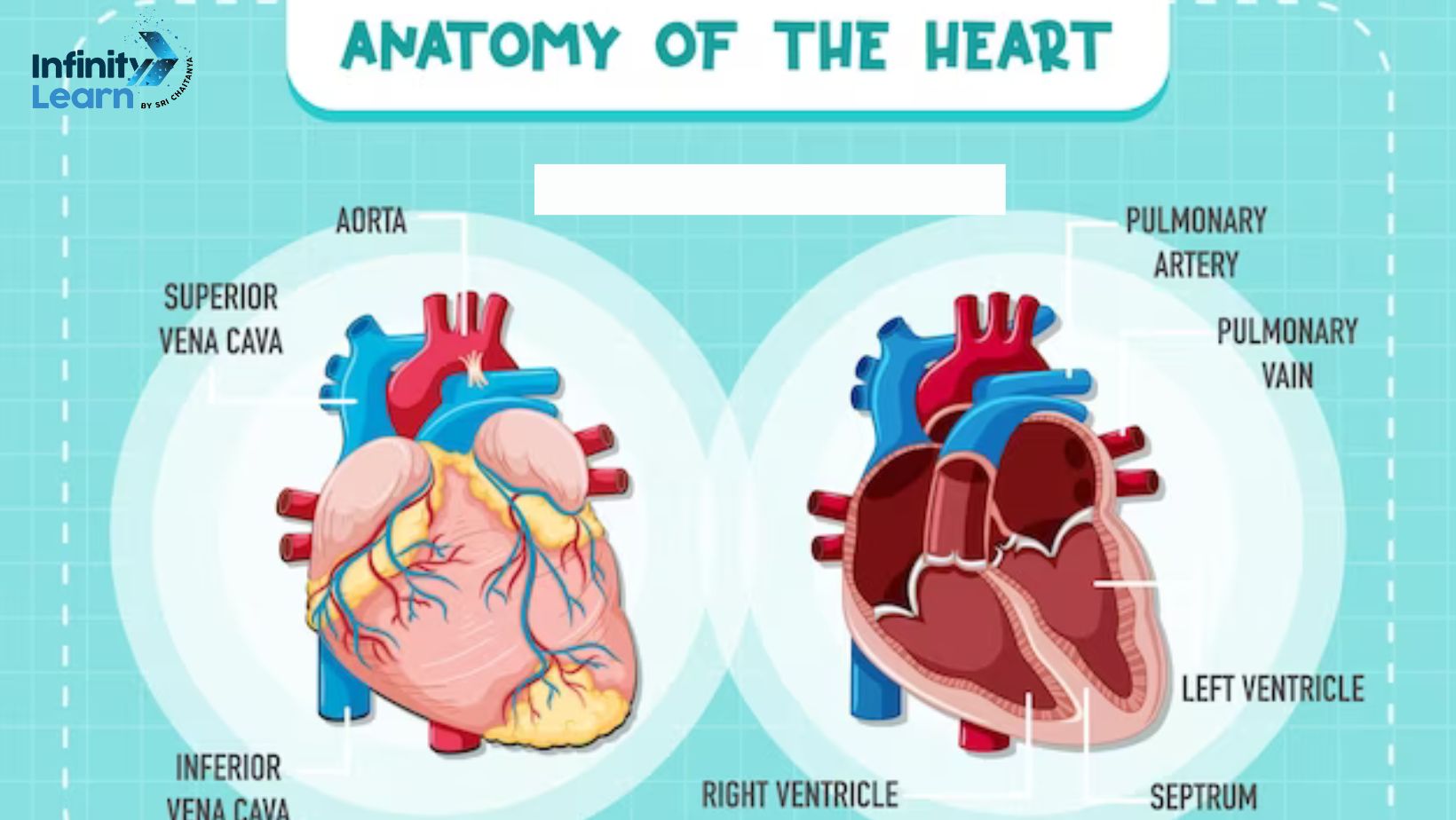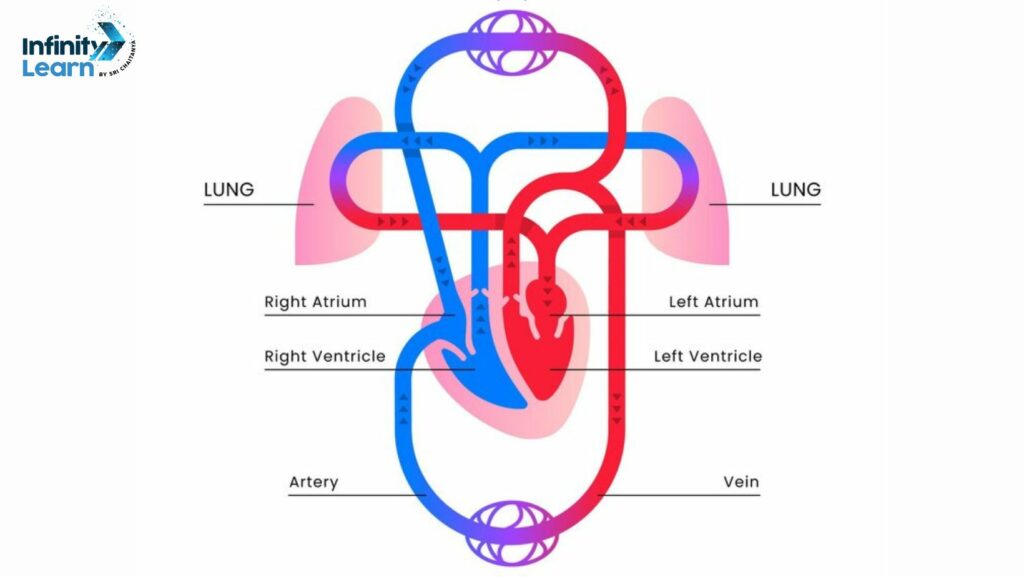Table of Contents
Circulation is when blood moves around your body through tubes called vessels. This happens because your heart pumps the blood. It carries important stuff like food and air to all parts of your body, and takes away things your body doesn’t need. There are two main types: one carries blood to and from the lungs, and the other carries blood to and from everywhere else in your body.
Also Check: Digestive System of Amoeba
The circulatory system is like the body’s highway network, made up of blood vessels that ferry blood to and from the heart. Arteries are like outgoing lanes, taking blood away from the heart, while veins act as the return lanes, bringing blood back to the heart. This system ensures that oxygen, nutrients, and hormones are delivered to all parts of the body, keeping everything running smoothly.
What is the Circulatory System?
Your body’s circulatory system includes your heart and blood vessels. Its main job is to carry oxygen, nutrients, and hormones to all the muscles, tissues, and organs in your body. It also helps get rid of waste from cells and organs, so your body stays clean and healthy.
Your heart pushes blood around your body through tubes called arteries and veins. Another name for your circulatory system is the cardiovascular system. “Cardio” means heart, and “vascular” refers to blood vessels.
Also Check: Nutrition
The circulatory system ensures that every part of your body gets the blood it needs to work properly.
Human Circulatory System Diagram

Also Check: Organisms Reproduce Class 10
Features of Circulatory System
- The human body’s circulatory system includes blood, heart, blood vessels, and lymph.
- This system works in two loops, moving oxygenated blood and deoxygenated blood separately.
- The heart has four parts: two ventricles and two auricles.
- There’s a network of blood vessels throughout the body, including arteries, veins, and capillaries.
- Blood vessels carry oxygen and nutrients to all body parts and also remove waste.
- The circulatory system is very long. If you lined up all the veins, arteries, and capillaries in the body, they would stretch about 100,000 kilometers, which is roughly eight times the Earth’s diameter.
Also Check: CBSE Class 10 Science Syllabus
What Does the Heart Do?
The heart works like a pump, pumping around 60 to 100 times per minute. Every time it beats, it sends blood everywhere in our bodies, giving oxygen to every cell. Once it delivers the oxygen, the blood comes back to the heart. Then, the heart sends the blood to the lungs to get more oxygen. This keeps happening again and again.
The heart is like a pump that beats around 60 to 100 times every minute. Each time it beats, it sends blood all over our bodies, giving oxygen to each cell. Once the oxygen is delivered, the blood comes back to the heart.
Also Check: CBSE Syllabus for Class 10

Also Check: Life Process
Double Circulation
A process where blood travels twice through the heart during one full cycle is called double circulation.
There are two routes in double circulation: systemic circulation and pulmonary circulation.
Double circulation happens in birds and mammals.

The human body has a special way of moving blood around, and it works really well. Blood goes through the heart two times, which is why it’s called double circulation. Unlike us, animals like fish have single circulation, where blood travels through their body only once.
Also Check: Anaerobic Respiration
Double circulation is good because it ensures that every part of our body gets a constant supply of oxygen-rich blood, and it stays separate from the oxygen-poor blood.
Human Circulatory System FAQs
What are the 4 main parts of the circulatory system?
The circulatory system consists of four main parts: the heart, blood vessels (arteries, veins, and capillaries), blood, and lymphatic system.
What are the 7 organs of the circulatory system?
The circulatory system includes seven essential organs: the heart, arteries, veins, capillaries, lungs, liver, and kidneys.
What are the 4 main functions of the circulatory system?
The circulatory system performs four primary functions: transporting oxygen, nutrients, hormones, and waste products throughout the body; regulating body temperature; fighting infections; and maintaining pH balance.
What is the circulatory system of the human body?
The circulatory system is a complex network of organs and vessels that work together to transport blood, oxygen, and nutrients throughout the body while removing waste products.
What is the circulatory system in short?
In short, the circulatory system is the body's transportation system, responsible for moving blood and nutrients to where they're needed and removing waste products.
What are the parts and functions of the circulatory system?
The circulatory system includes the heart, blood vessels, blood, and lymphatic system. Its functions include transporting nutrients, oxygen, and waste, regulating temperature, and fighting infections.
What is systemic circulation of the heart?
Systemic circulation refers to the part of circulation where oxygen-rich blood is pumped from the heart to the body through arteries and returns oxygen-poor blood to the heart through veins.
What is the function of the heart?
The heart's main function is to pump blood throughout the body, delivering oxygen and nutrients to cells and removing waste products.









